Index - Introduction - Lessons
Guide Tones
Scale degrees 3 and 7 are very important chord tones that help us to establish and outline the harmonies of a piece of music. In many standard harmonic progressions, there is a melodic line that runs smoothly between each chord by using scale degrees 3 and 7 which are called guide tones.
A guide tone line creates either common tones or connecting tones between each harmony. A common tone is one pitch that is a chord tone in two different chords. For example, the chords C minor 7 and F7 have both the pitches C and E flat in common, making them common tones:
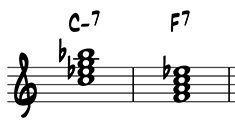
Connecting tones link one chord to another through an interval of a half step or whole step. In the examples below, there is a connection of a step between almost every measure where scale degree 3 moves to scale degree 7, or scale degree 7 moves to scale degree 3.
There are two guide tone lines in our blues. One line begins on scale degree 3 of the B flat 7 chord, and the other begins on scale degree 7 of the B flat 7 chord. Memorize them!
Guide tone line beginning on scale degree 3:
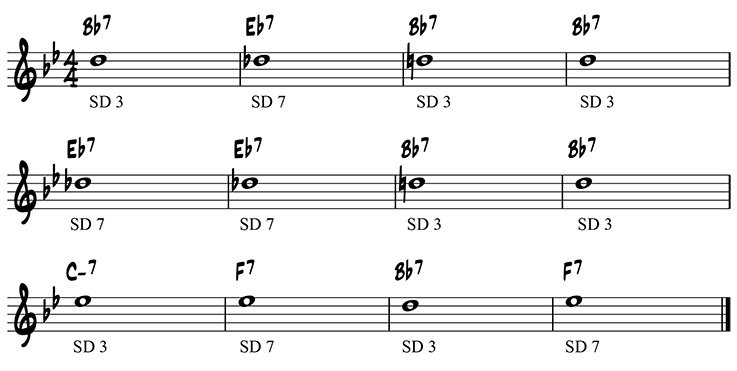
Guide tone line beginning on scale degree 7:
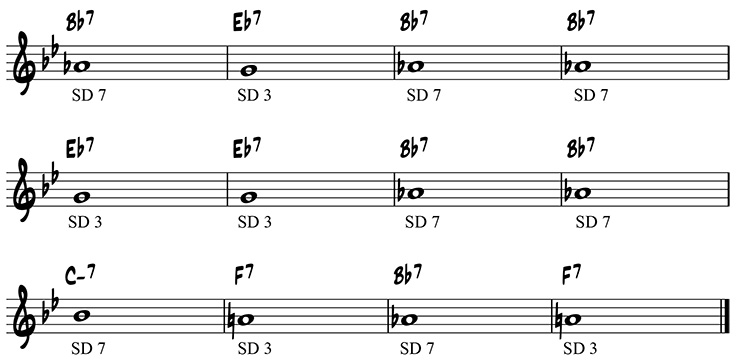
Part 1: Compose
Part 1.1 Compose a blues solo using only the pitches of the guide tone line that begins on scale degree 3 of the B flat 7 chord. Begin with a two-measure riff on scale degree 3 of the B flat 7 chord, and scale degree 7 of the E flat 7 chord. In the next two measures, compose a rhythmic variation on your first idea, using scale degree 3 of of the B flat 7 chord. Compose two-measure variations throughout the rest of the blues using the exact pitches of the first guide tone line. (For free blank staff paper, visit www.Music-Paper.com)
Example of a B flat blues guide tone solo beginning on scale degree 3:
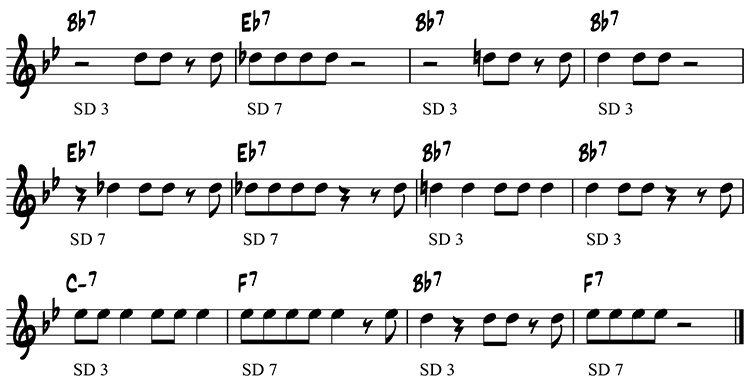
Part 1.2 Compose a blues solo following the same instructions as above, but begin on scale degree 7 of the B flat 7 chord, and follow the second guide tone line.
Example of a B flat blues guide tone solo beginning on scale degree 7:
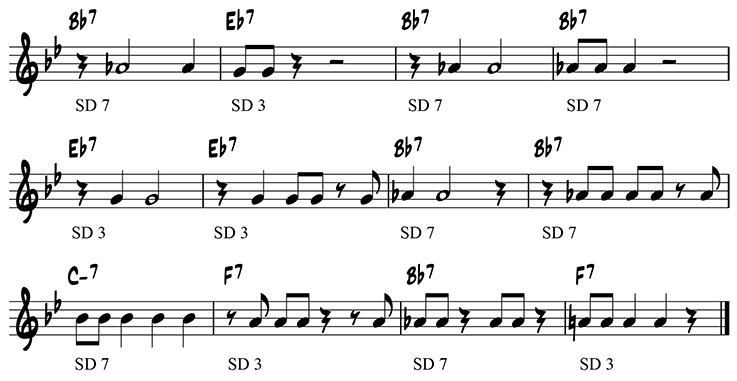
Part 2: Memorize
Memorize the two guide tone lines and the solos that you have written. Practice them many times so that you can play them effortlessly and accurately.
Part 3: Improvise
Improvise in the same style as your written solos, and use the two guide tone lines for your choice of pitches. Create rhythmic variations with each two-measure phrase.
Suggestions: Create simple ideas, especially at the beginning of your solos. Make them easy to play and memorable. Avoid making the solos too complex. Remember that a complicated solo is not necessarily a good solo.

If you like this site, please share it with others!


Like Kyle Coughlin Music on Facebook
Follow Kyle Coughlin Music on Twitter